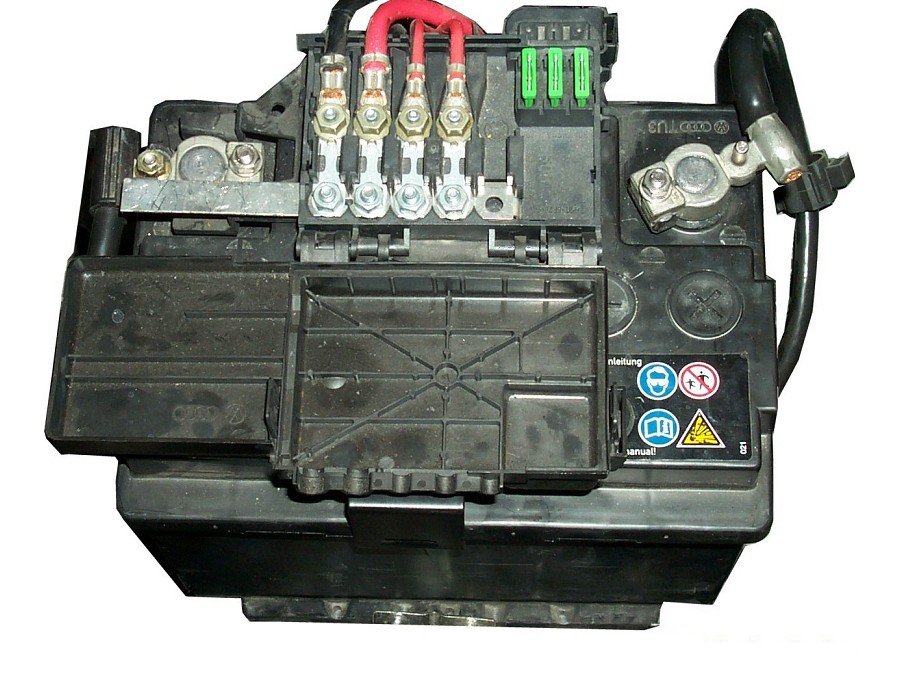Internal Resistance (battery)


All devices involved in the circuit and wiring have an internal resistance. This is however, mostly very small, for example, that of a fuse, or a short cable. However, in these, the resistance can increase if the cable is too thin, made of lead, or even constantan. In automobiles there can be cables of up to 10m or even longer.
Every power source or battery has an internal resistance. One can recognise this by the fact that the tension of a battery varies, whether it is demanded or not. If one divides the tension difference using Ohm's law, by the current, one can calculate the internal resistance.
What do we mean by the term internal resistance? First of all, we substitute the normal tension with an, as it were, ideal power source, whose tension does not fall under demand, additionally we switch the internal resistance serially. This is not constant, but varies according to demand.
If one wants to determine a power source or a power pack for a certain application, one selects, for the determination of the internal resistance, ideally, the typical maximum demand. This would be, in vehicle batteries, normally, the cold start. The less the load varies, the more free of loss a power supply can be selected.
There are also batteries with which the internal resistance rises sharply anyhow towards the end of their service life. The automobile battery belongs to this category. If, when the same demands are made, the tension drops sharply, this is a clear indication that the battery is nearing the end of its durability.
One can recognise cables that are too thin (e.g., also in the household) or perhaps also overloaded batteries by the fact that they become warm.
|